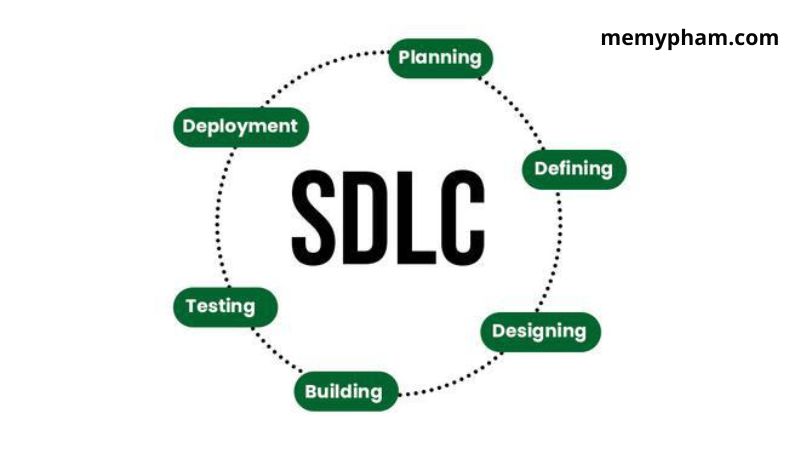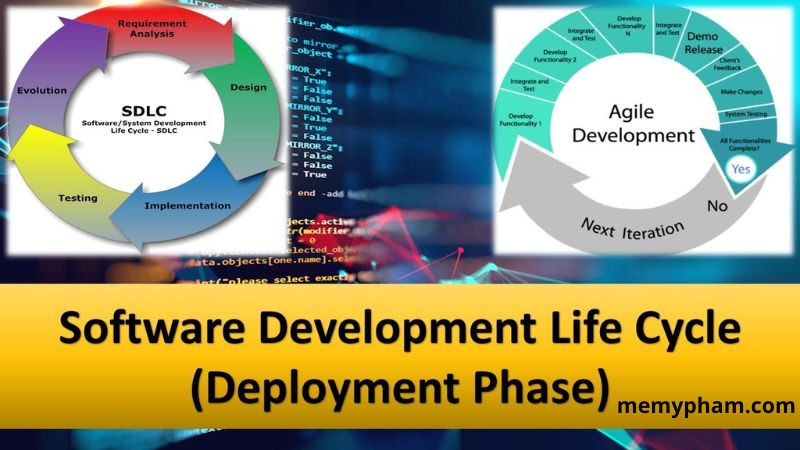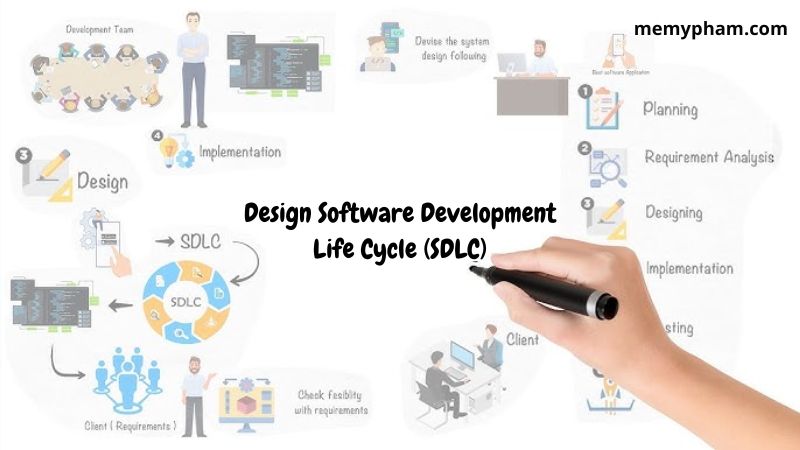In the world of software development, success hinges not just on the brilliance of code but also on the structured process that brings it to life. At the heart of this process lies the Software Development Life Cycle (SDLC). Designing a robust SDLC is paramount to ensuring smooth, efficient, and successful software projects. In this article, Memypham delve into the intricacies of design software development life cycle that fosters innovation, collaboration, and quality deliverables.
Design Software Development Life Cycle (SDLC): Planning Phase
The foundation of any successful endeavor is laid during the planning phase of the SDLC. Here, meticulous attention is paid to gathering and analyzing requirements from stakeholders. This phase sets the stage for what follows, shaping the direction of the entire project. It is in this phase that the design software development life cycle finds its first iteration, as it encapsulates the essence of structuring the development process.

Conducting a comprehensive feasibility study is another critical aspect of the planning phase. This involves evaluating the technical, operational, and financial feasibility of the project. The design software development life cycle underscores the importance of intentional planning, ensuring that the chosen SDLC model aligns with the project’s objectives and constraints.
Architecting Success: Design Phase
With a solid plan in place, the focus shifts to the design phase, where the blueprint for the software takes shape. Here, the design software development life cycle echoes through the corridors of decision-making as architects define the system architecture, database schema, and application design. Each element is meticulously crafted to ensure scalability, flexibility, and maintainability.

System architecture lays the groundwork for the entire software solution, defining the interactions between its various components. The design software development life cycle serves as a guiding principle, reminding architects to design with foresight, anticipating future requirements and technological advancements.
Implementing Excellence: Implementation Phase
As developers roll up their sleeves and dive into code, the implementation phase comes alive with creativity and craftsmanship. Here, the SDLC takes on a tangible form as lines of code are written and tested. Unit testing ensures that individual modules meet specifications, while integration testing validates their seamless integration into the broader system.
The implementation phase is where the rubber meets the road, translating design blueprints into functional software. The design software development life cycle serves as a beacon, guiding developers through the intricacies of coding standards, best practices, and version control.
Testing the Waters: Testing Phase
No software project is complete without rigorous testing to ensure its reliability, performance, and security. The testing phase is where the SDLC shines brightest, as QA engineers meticulously scrutinize every aspect of the software against predefined criteria.
System testing simulates real-world scenarios to validate the software’s behavior under various conditions. Acceptance testing involves stakeholders to verify that the software meets their expectations and business needs. Performance testing evaluates the system’s responsiveness, scalability, and resource utilization under stress.
Navigating Deployment: Deployment Phase
With testing complete and stakeholders satisfied, the software is ready to embark on its journey to production. The deployment phase is where the design software development life cycle transitions from theory to reality, as deployment plans are executed with precision and care.

Deployment planning encompasses hardware setup, software installation, and data migration strategies. Rollout strategies are devised to minimize disruption and ensure a smooth transition to the new system. Post-deployment testing ensures that the software functions as intended in the production environment, addressing any unforeseen issues promptly.
Sustaining Excellence: Maintenance Phase
The journey doesn’t end with deployment; it merely enters a new phase of evolution and refinement. The maintenance phase is where the SDLC takes on renewed significance, guiding teams through the ongoing process of bug fixing, updates, and enhancements.
Bug fixing is an ongoing activity, as new issues are identified and addressed promptly to maintain the integrity of the software. Updates and enhancements are driven by user feedback, evolving requirements, and technological advancements. Performance monitoring ensures that the software continues to meet performance targets and user expectations.
Documenting and Evolving: Documentation and Knowledge Transfer
Throughout the SDLC, documentation plays a vital role in capturing project artifacts, decisions, and lessons learned. The design software development life cycle permeates every document, serving as a constant reminder of the structured approach that underpins the project’s success.
Knowledge transfer sessions ensure that insights gained during the project are shared across the team, fostering a culture of continuous learning and improvement. Post-implementation reviews provide an opportunity to reflect on the project’s successes and challenges, refining processes, tools, and methodologies for future endeavors.
Conclusion:
In the realm of software development, success is not a destination but a journey fueled by innovation, collaboration, and relentless pursuit of excellence. At the heart of this journey lies the Software Development Life Cycle, meticulously designed to guide teams through the complexities of software projects. By embracing the design software development life cycle as a guiding principle, organizations can navigate this journey with confidence, knowing that they have laid the groundwork for success from the outset.
